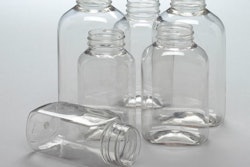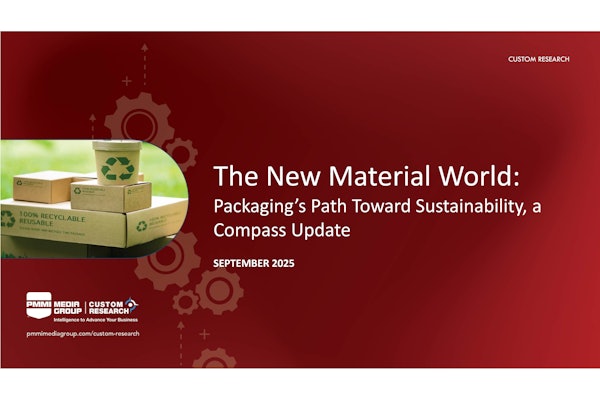According to many industry sectors, 60 percent of all the electronic devices from Asian unauthorized sources are now being counterfeited. Dog food, pharmaceuticals, jewelry, consumer goods, and other items have made the news. Three industries of absolute concern are aerospace and defense, medical devices, and pharmaceutical drugs, in which Return Material Authorizations (RMAs) are of little value. It is essential that medical device packaging undergo validation by a formalized packaging and materials qualification process.
With globalization comes the utilization of offshore suppliers and contract manufacturers (CMs). The medical device and pharmaceutical sectors need to be especially vigilant in protecting their Intellectual Property (IP) by utilization of innovative packaging designs to keep one step ahead of the counterfeiters. Some current counterfeiting problems include the following:
• Re-marked products (most common), incorrect dies, noncompliant packaging materials, reproduction of chip designs, substandard packaging, different labels on packages, and false Restriction of Hazardous Substances (RoHS) notifications (whether the product contains lead). RoHS was adopted in February 2003 by the European Union.
• Counterfeiters are now buying legitimate products from distributors to secure products, date codes, and packaging styles. Then, upon completion of the “reverse-engineering process,” the counterfeiters will add salt to the wound by returning the counterfeited product to the distributor as a customer return. In addition, sophisticated duplication efforts for both paperboard and PETG or APET packaging are widespread.
• Incoming inspection issues attributed to substandard generic material substitutions have not made national news; however, it is critical since an individual's health could be jeopardized. To compound the problem, organizations are accepting supplier specifications as adequate proof in utilizing a product.
• Evaluation of so-called “antistatic” packaging for medical devices has not resulted in favorable outcomes in spite of product claims by suppliers.
• Immigration and Customs Enforcement efforts are insignificant in comparison to real dollars and job losses annually.
• Repackaging is also a problem, as addressed in the article, “Repackaging ban most powerful tool to prevent counterfeiting in Europe,” which appeared June 24, 2008 in In-Pharmatechnologist.com. The article said, “European pharmaceutical manufacturers stepped up calls for a blanket ban on repackaging of pharmaceuticals last week, suggesting that this would be the single most effective way to seal the supply chain for counterfeiting drugs…as an industry we are prepared to make the necessary investment so that we can track and trace our products. But that will have no value if people are allowed to take and destroy our packaging.”
-By Robert J. Vermillion
Robert J. Vermillion, CPP/Fellow, is a Certified ESD & Product Safety Engineer-iNARTE and ESDA Standards member. He is the founder and chair of the Medical Device Committee ESD Task Group with the Institute of Packaging Professionals. He conducts ESD seminars in the U.S. and abroad. Vermillion is the founder/president of RMV Technology Group, LLC, a third-party ESD Materials Testing and Consulting company. He may be reached at 650/964-4792 or [email protected].
With globalization comes the utilization of offshore suppliers and contract manufacturers (CMs). The medical device and pharmaceutical sectors need to be especially vigilant in protecting their Intellectual Property (IP) by utilization of innovative packaging designs to keep one step ahead of the counterfeiters. Some current counterfeiting problems include the following:
• Re-marked products (most common), incorrect dies, noncompliant packaging materials, reproduction of chip designs, substandard packaging, different labels on packages, and false Restriction of Hazardous Substances (RoHS) notifications (whether the product contains lead). RoHS was adopted in February 2003 by the European Union.
• Counterfeiters are now buying legitimate products from distributors to secure products, date codes, and packaging styles. Then, upon completion of the “reverse-engineering process,” the counterfeiters will add salt to the wound by returning the counterfeited product to the distributor as a customer return. In addition, sophisticated duplication efforts for both paperboard and PETG or APET packaging are widespread.
• Incoming inspection issues attributed to substandard generic material substitutions have not made national news; however, it is critical since an individual's health could be jeopardized. To compound the problem, organizations are accepting supplier specifications as adequate proof in utilizing a product.
• Evaluation of so-called “antistatic” packaging for medical devices has not resulted in favorable outcomes in spite of product claims by suppliers.
• Immigration and Customs Enforcement efforts are insignificant in comparison to real dollars and job losses annually.
• Repackaging is also a problem, as addressed in the article, “Repackaging ban most powerful tool to prevent counterfeiting in Europe,” which appeared June 24, 2008 in In-Pharmatechnologist.com. The article said, “European pharmaceutical manufacturers stepped up calls for a blanket ban on repackaging of pharmaceuticals last week, suggesting that this would be the single most effective way to seal the supply chain for counterfeiting drugs…as an industry we are prepared to make the necessary investment so that we can track and trace our products. But that will have no value if people are allowed to take and destroy our packaging.”
-By Robert J. Vermillion
Robert J. Vermillion, CPP/Fellow, is a Certified ESD & Product Safety Engineer-iNARTE and ESDA Standards member. He is the founder and chair of the Medical Device Committee ESD Task Group with the Institute of Packaging Professionals. He conducts ESD seminars in the U.S. and abroad. Vermillion is the founder/president of RMV Technology Group, LLC, a third-party ESD Materials Testing and Consulting company. He may be reached at 650/964-4792 or [email protected].





















